Jinghua Feng
Automatic Deduction Path Learning via Reinforcement Learning with Environmental Correction
Jun 16, 2023Abstract:Automatic bill payment is an important part of business operations in fintech companies. The practice of deduction was mainly based on the total amount or heuristic search by dividing the bill into smaller parts to deduct as much as possible. This article proposes an end-to-end approach of automatically learning the optimal deduction paths (deduction amount in order), which reduces the cost of manual path design and maximizes the amount of successful deduction. Specifically, in view of the large search space of the paths and the extreme sparsity of historical successful deduction records, we propose a deep hierarchical reinforcement learning approach which abstracts the action into a two-level hierarchical space: an upper agent that determines the number of steps of deductions each day and a lower agent that decides the amount of deduction at each step. In such a way, the action space is structured via prior knowledge and the exploration space is reduced. Moreover, the inherited information incompleteness of the business makes the environment just partially observable. To be precise, the deducted amounts indicate merely the lower bounds of the available account balance. To this end, we formulate the problem as a partially observable Markov decision problem (POMDP) and employ an environment correction algorithm based on the characteristics of the business. In the world's largest electronic payment business, we have verified the effectiveness of this scheme offline and deployed it online to serve millions of users.
Explored An Effective Methodology for Fine-Grained Snake Recognition
Jul 24, 2022

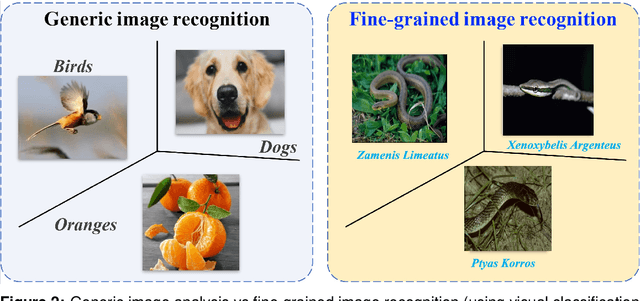

Abstract:Fine-Grained Visual Classification (FGVC) is a longstanding and fundamental problem in computer vision and pattern recognition, and underpins a diverse set of real-world applications. This paper describes our contribution at SnakeCLEF2022 with FGVC. Firstly, we design a strong multimodal backbone to utilize various meta-information to assist in fine-grained identification. Secondly, we provide new loss functions to solve the long tail distribution with dataset. Then, in order to take full advantage of unlabeled datasets, we use self-supervised learning and supervised learning joint training to provide pre-trained model. Moreover, some effective data process tricks also are considered in our experiments. Last but not least, fine-tuned in downstream task with hard mining, ensambled kinds of model performance. Extensive experiments demonstrate that our method can effectively improve the performance of fine-grained recognition. Our method can achieve a macro f1 score 92.7% and 89.4% on private and public dataset, respectively, which is the 1st place among the participators on private leaderboard.
Reliable Representations Make A Stronger Defender: Unsupervised Structure Refinement for Robust GNN
Jun 30, 2022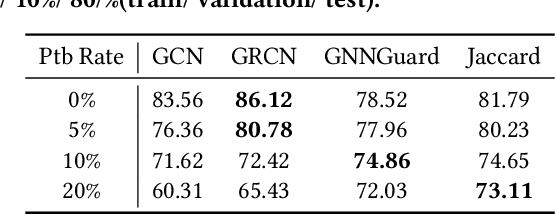
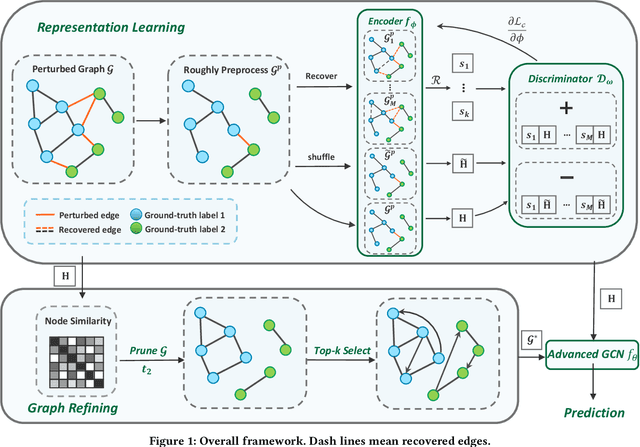
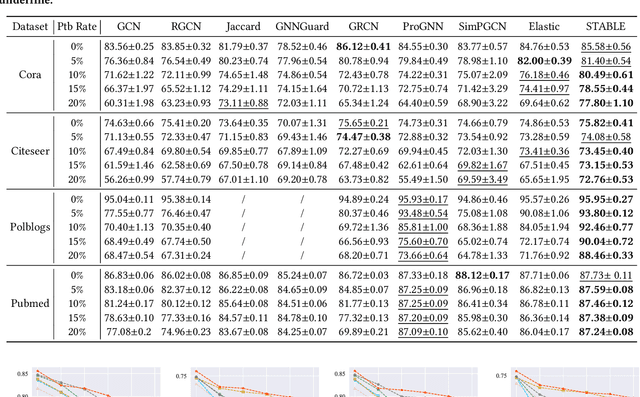
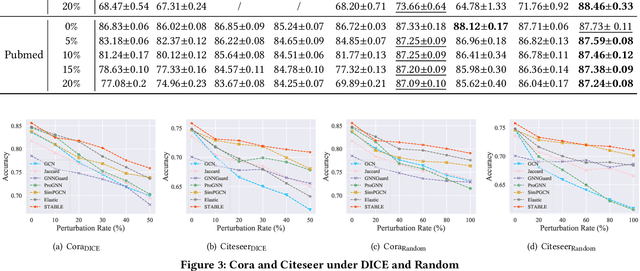
Abstract:Benefiting from the message passing mechanism, Graph Neural Networks (GNNs) have been successful on flourish tasks over graph data. However, recent studies have shown that attackers can catastrophically degrade the performance of GNNs by maliciously modifying the graph structure. A straightforward solution to remedy this issue is to model the edge weights by learning a metric function between pairwise representations of two end nodes, which attempts to assign low weights to adversarial edges. The existing methods use either raw features or representations learned by supervised GNNs to model the edge weights. However, both strategies are faced with some immediate problems: raw features cannot represent various properties of nodes (e.g., structure information), and representations learned by supervised GNN may suffer from the poor performance of the classifier on the poisoned graph. We need representations that carry both feature information and as mush correct structure information as possible and are insensitive to structural perturbations. To this end, we propose an unsupervised pipeline, named STABLE, to optimize the graph structure. Finally, we input the well-refined graph into a downstream classifier. For this part, we design an advanced GCN that significantly enhances the robustness of vanilla GCN without increasing the time complexity. Extensive experiments on four real-world graph benchmarks demonstrate that STABLE outperforms the state-of-the-art methods and successfully defends against various attacks.
 Add to Chrome
Add to Chrome Add to Firefox
Add to Firefox Add to Edge
Add to Edge